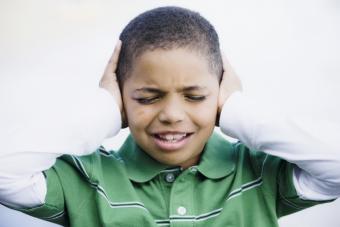
Considered a type of visual stimulation or "stim," hand flapping can be a way for people on the autism spectrum to make sense of their world. As a parent or caregiver, you may find this behavior worrisome and difficult to understand. However, like rocking, it may serve an important function for the individual on the spectrum.
What Flapping Looks Like
For many parents and caregivers of kids on the spectrum, hand flapping is one of the first signs something is different about their child. At first, this behavior may seem quirky but cute, and it's common for parents to refer to their child as a "little bird." However, as your child grows and develops, it can become apparent that the flapping behavior isn't going away. This is when many parents get concerned.
There is a distinctive style to this kind of flapping. If your child is prone to this behavior, you may notice some of the following:

- Quick flapping motions of the hands, usually bending from the wrist
- Hands usually, but not always, held high enough for the child to see in his or her field of vision
- Flapping accompanied by a bouncing step, spinning, hopping, or kicking of the legs
- A high-pitched or repetitive noise or phrase accompanying the flapping
- Flapping that continues from a few seconds to several minutes
- Lack of eye contact or meaningful interaction during flapping
Repetitive Behaviors and Autism
Officially, hand flapping is a type of "stereotypy," which basically refers to any repetitive motion without an obvious reason. According to a 2008 study in the journal Developmental Medicine & Child Neurology, this type of behavior is significantly more common in preschool children on the autism spectrum than in those with other disorders. The study examined different types of stereotypy, including hand flapping, and found that repetitive arm and finger movements were present in 58 perecent of children with autism spectrum disorders, compared to 14 percent of children with other developmental disorders.
Repetitive behaviors, such as flapping, are one of the core diagnostic criteria of autism, according to the Centers for Disease Control and Prevention. However, it's important to note that not every child who exhibits this behavior is on the autism spectrum. This flapping is simply a sign your child is struggling to understand or incorporate what he or she is feeling and sensing.
Integrating the Senses

Many autism experts and occupational therapists believe that kids on the spectrum often struggle with sorting out sensory information their bodies receive from their environments. In fact, a 2007 study in the American Journal of Occupational Therapy found that 95 percent of kids with ASD had some level of dysfunction when it came to sensory processing.
You've probably experienced a version of sensory challenges yourself if you've ever been in a very noisy restaurant. You might have noticed that you had to strain to pick out the conversation at your table, and when you returned home, you were probably exhausted. For children with autism, every experience may be something like this.
According to this theory, hand flapping is a way for kids to regulate their visual sensory input. They can control the flapping, and it may give them a chance to relax for a few seconds and recharge their batteries. Although it is more obvious, flapping is really not very different from other visual "stims" like spinning objects or repeatedly moving a toy back and forth. All of these behaviors help a child understand where he or she is in space.
Why You May Be Concerned
Despite the fact that flapping isn't a sure sign of autism spectrum issues, it does indicate that the child may be dealing with sensory problems. This can be alarming to many parents for the following reasons:
- There's a social stigma associated with flapping. You may be concerned about what others will think when they see your child behaving this way.
- Flapping can be distracting. For the child, this may be the whole point in doing the behavior, but for you, it can be somewhat frustrating.
- The flapping may be a constant reminder of your concerns about your child's development. Many parents associate this type of visual stimulation with their own anxiety.
How to Help
Depending on your child's developmental age, you may be able to reduce or change this flapping behavior. If you're concerned about your child's flapping, try some of the following ideas:

- Have your child assessed by an occupational therapist with experience in sensory integration dysfunction. This therapist is trained to help your child make sense of his or her sensory experiences in ways that are more socially accepted.
- Experiment with the idea of setting boundaries on the flapping. Some parents report that this structure works well for their children. Encourage your child to take a flapping break at various points in the day, but be careful not to send the message that your child is doing something wrong by flapping his or her hands.
- Point out the flapping behavior to your child when it is happening. This can help your child become more aware of the behavior and how he or she is feeling at the time. This information can help some children regulate the behavior.
If you can't change the flapping, you might be able to change your feelings about the behavior. It's important to remember that flapping isn't inherently wrong. It's a symptom, not the problem itself. If you find flapping is causing you to feel upset or anxious, you might benefit from an occasional break or a chance to discuss your feelings with a professional or an autism support group.
Talk to Your Child's Pediatrician
Regardless of whether your child's hand flapping indicates autism, it's important to discuss any behavior concerns with a pediatrician. You child's doctor will provide you with resources and next steps for handling this issue.







